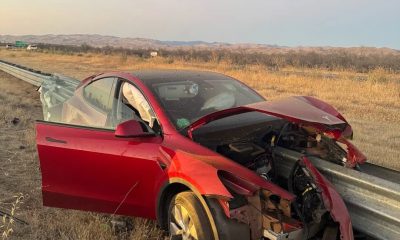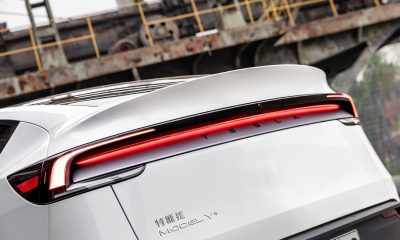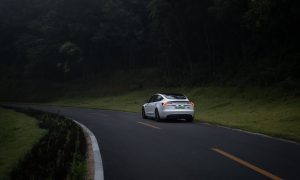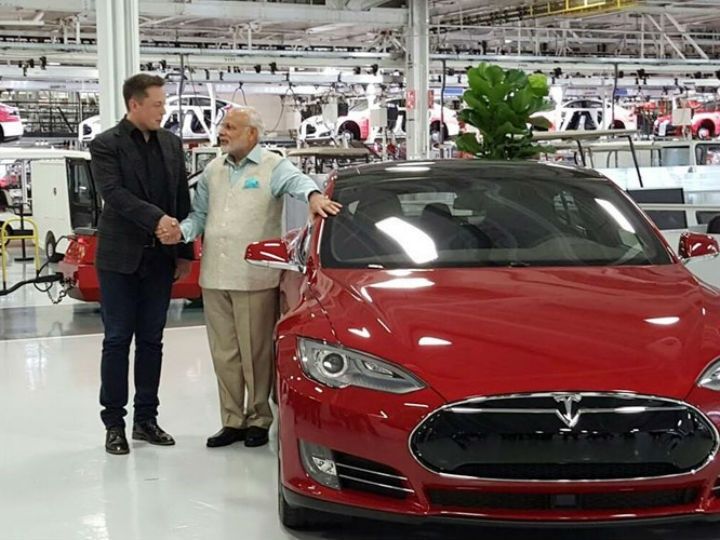

News
Uber plans to launch EVs in a market that Tesla is eyeing for its next factory
Uber announced today that it has plans to launch a fleet of 25,000 electric vehicles in India, a country where Tesla could soon end up as years of speculation of the electric automaker building a new production facility there could culminate in the company’s newest location by the end of the year.
Uber is using a program called Uber Green to boost financing options as it looks to partner with local fleet operators to expand the presence of electric power trains in India. The ridesharing service also stated that it would like to roll out 10,000 electric two-wheelers in the city of Delhi by 2024.
“India’s huge scale and electrification momentum makes the country a priority for Uber,” Senior Vice President of Mobility and Operations for the company, Andrew Macdonald, said.
New York City pushes Uber & Lyft fleets to be zero-emissions by 2030
Uber plans to be carbon-neutral by 2040 and stated that electrifying large markets like those in southern Asia are” a key piece” to its sustainability goals.
India is attracting a wide range of companies that are involved in the sustainable transportation market. While Uber announced these aggressive electrification goals today, Tesla has been eyeing the country of India as a potential suitor for a production facility of electric vehicles.
Tesla could reveal new Gigafactory location by end of 2023: Elon Musk
Tesla CEO of Elon Musk has met with Indian government officials on several occasions over the past decade, hoping to come to terms on a deal that would see the country host one of the automaker’s manufacturing facilities.
India has favored local manufacturing efforts in an attempt to boost its economy, which has made a partnership between Tesla and the country difficult. Tesla, while interested in building a plant in India, has refused to commit to a factory because it has no way of knowing whether demand is strong enough to justify a manufacturing effort there.
Tesla has requested the Indian government roll back import duties so it could test demand for a short time. However, the government has refused to give the automaker special treatment, maintaining that there is plenty of demand for the vehicles there and that import duties would only be rolled back if Tesla would commit to building a factory first.
This has left the two parties at a relative standstill, but there is no denying that the Indian government is interested in sustainable passenger transportation projects, which leaves plenty of room for both Tesla and India to come to terms eventually.
As Elon Musk hinted yesterday that Tesla could reveal the location of its next production plant by the end of the year, he was asked whether India was a favorable location.
“Absolutely,” he responded.
I’d love to hear from you! If you have any comments, concerns, or questions, please email me at joey@teslarati.com. You can also reach me on Twitter @KlenderJoey, or if you have news tips, you can email us at tips@teslarati.com.
News
Tesla driver walks away from major accident with minor injuries
The driver sustained only minor injuries, and the exact cause of the crash remains under investigation.
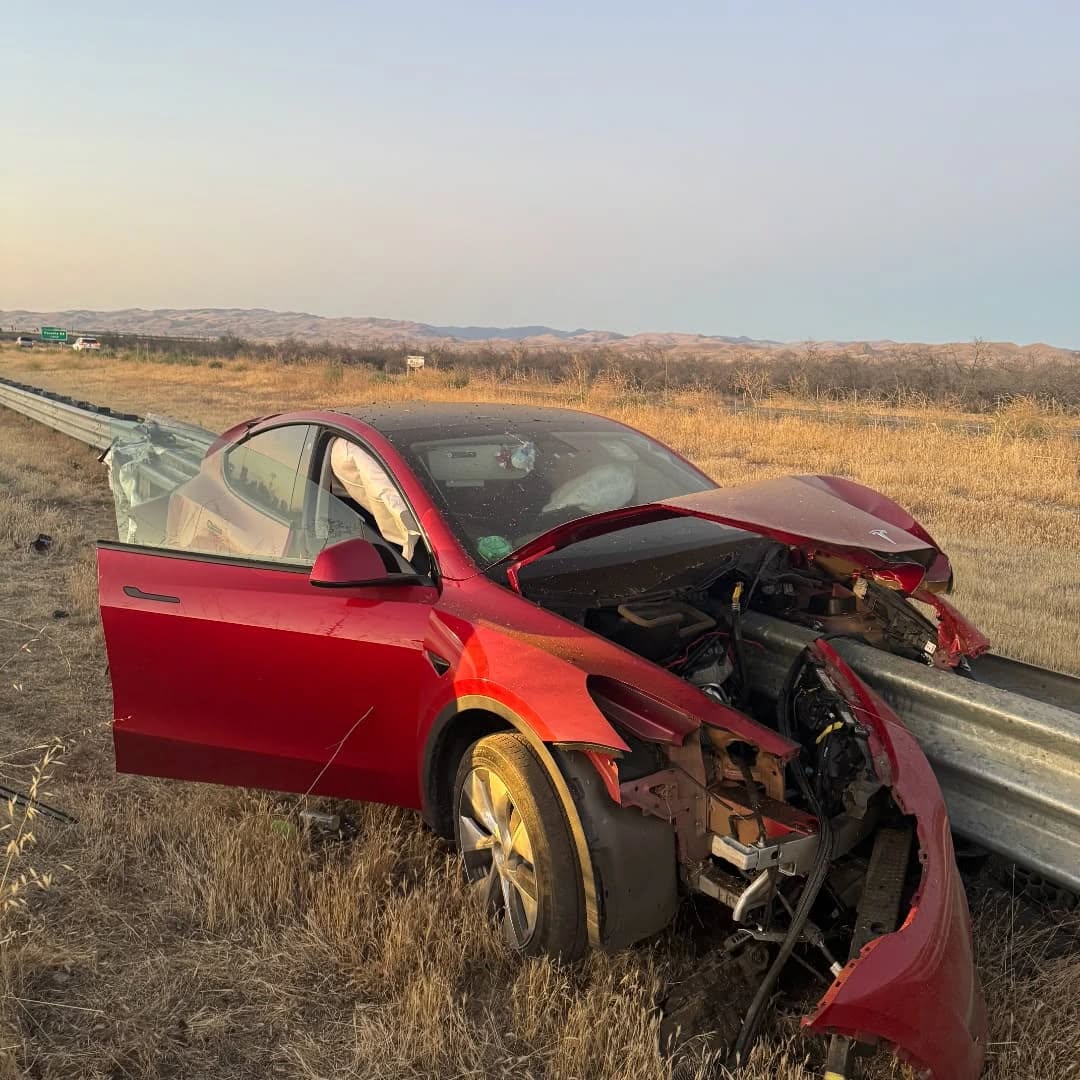
The driver of a Tesla Model Y survived and walked away from a harrowing accident on Monday in California, only sustaining minor injuries despite the vehicle being impaled by a guardrail.
On Monday morning around 4:34 a.m., the Los Banos division of the California Highway Patrol (CHP) responded to the accident on I-5 near Panoche Road, involving a 23-year-old in a Tesla Model Y. According to a post on social media, the driver veered off the road for unknown reasons in the northbound lane, before crashing directly into the guardrail and impaling the vehicle.
You can read the full message and photos from Los Banos CHP below, as were shared in a Facebook post on Monday afternoon.
This morning a Tesla model y was traveling in the #1 northbound lane of I-5 north of Panoche Rd. For unknown reasons driver allowed V-1 to veer off the roadway, travel through a dirt center divide, and crashed into the fixed metal guardrail. Lucky for the driver he only sustained minor injuries and was able to walk away. Driving a vehicle requires 100% attention to the road. Avoid distractions and focus on driving.
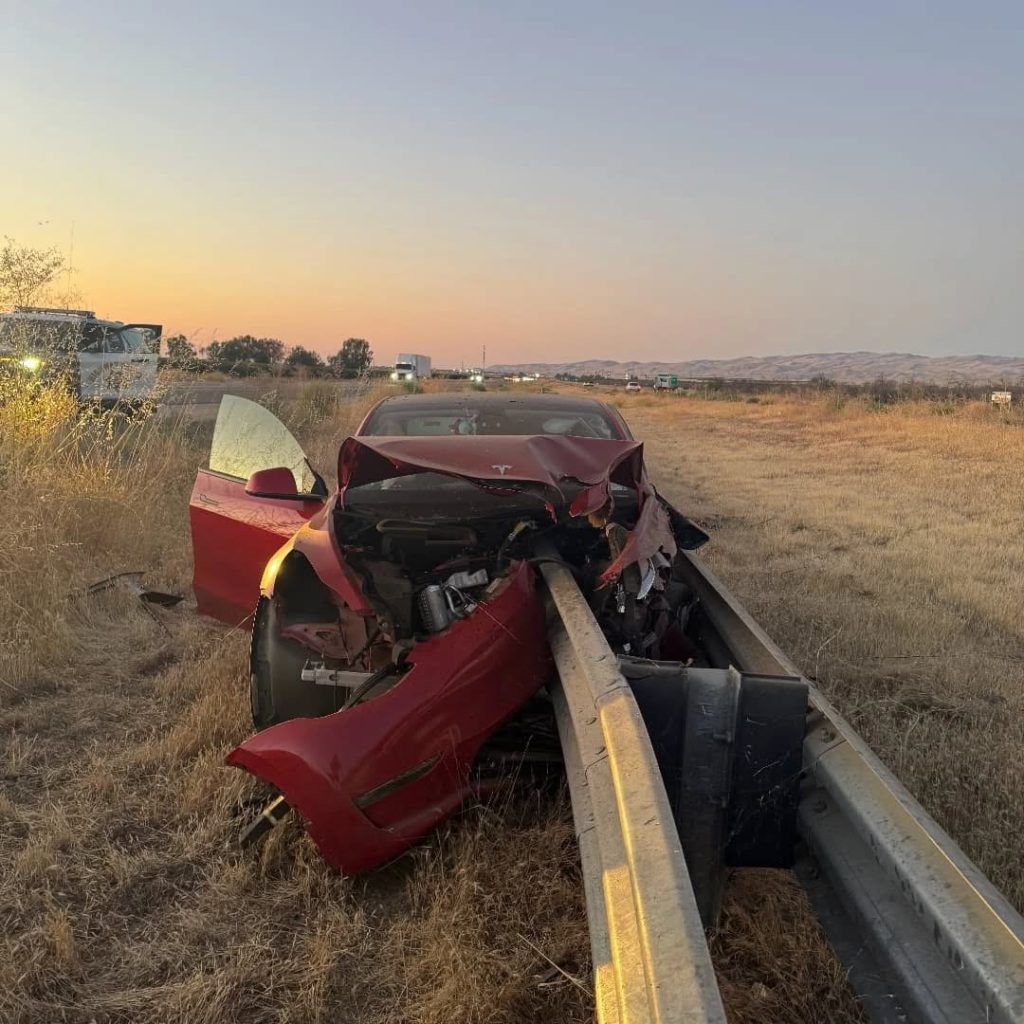
Credit: CHP Los Banos (via Facebook)
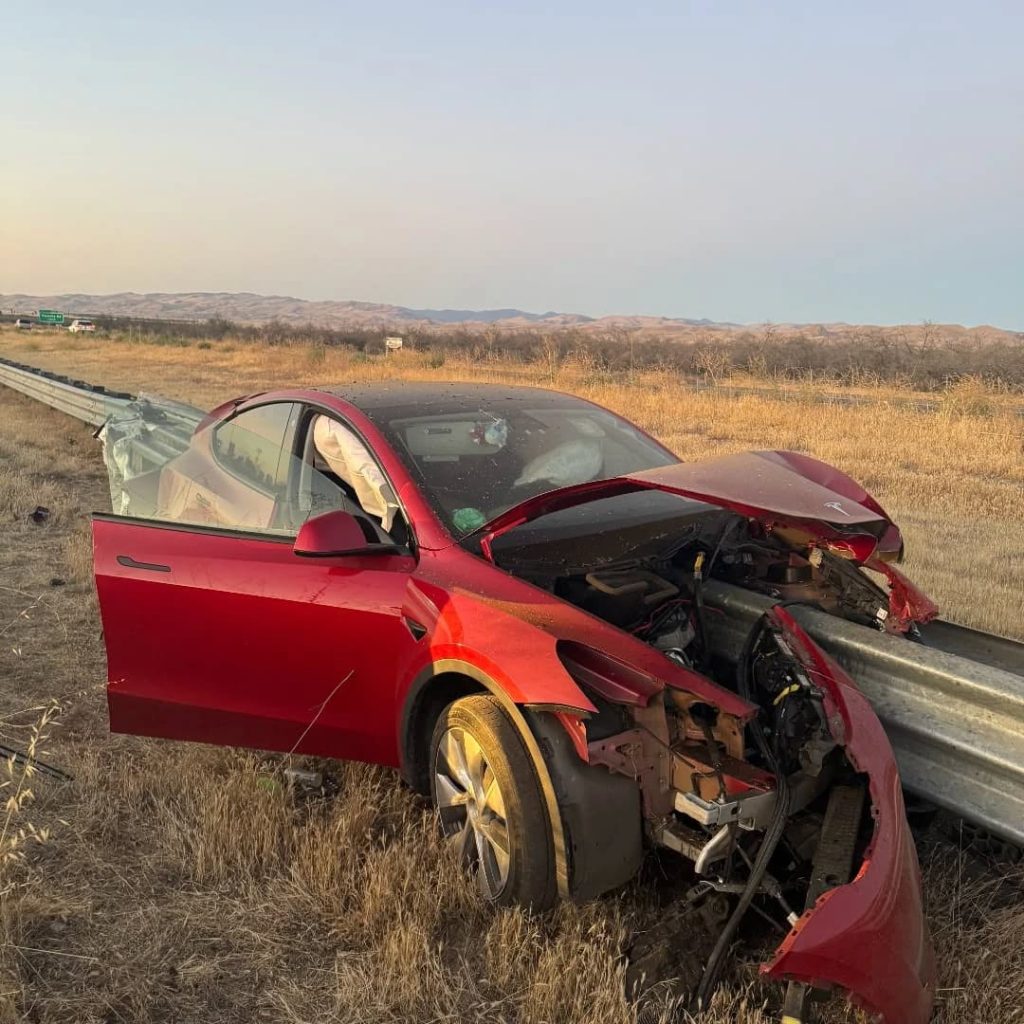
Credit: CHP Los Banos (via Facebook)
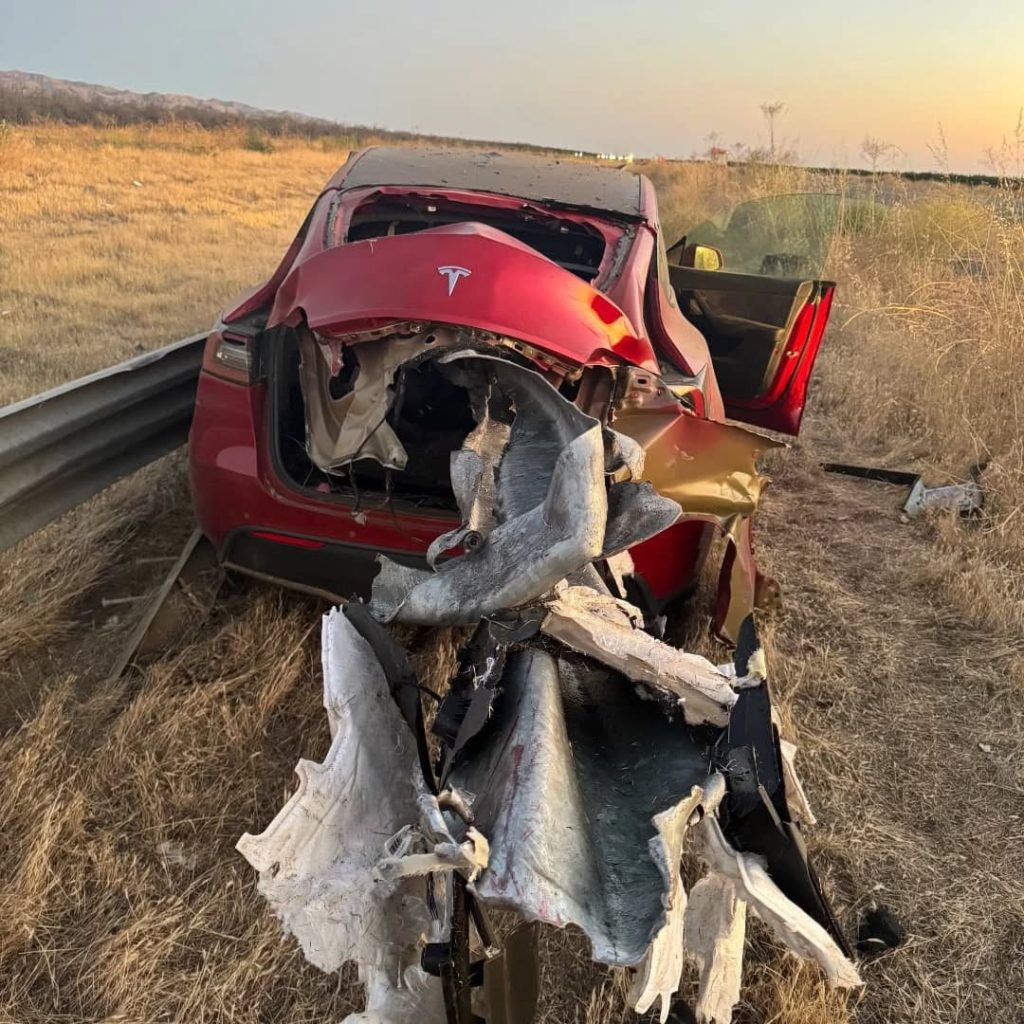
Credit: CHP Los Banos (via Facebook)
In a statement to SFGate, CHP officer Myles Anderson said that the driver only sustained minor injuries, while no arrests are made and drugs and alcohol are not suspected to have been involved. The report also notes that Tesla’s “cruise control and lane assistance features” were activated, according to Anderson. However, it’s not entirely clear if this is referring to Supervised Full Self-Driving (FSD), or to the cruise control and lane assist features baked into Autopilot.
At the time of writing, CHP has not yet responded to Teslarati’s request for clarification and additional details on the matter.
Tesla Crash Safety Ratings across its lineup: pic.twitter.com/ny30R7ceji
— TESLARATI (@Teslarati) July 1, 2025
READ MORE ON TESLA SAFETY: Tesla rolls out crucial new safety feature aimed at saving children
The news comes after Tesla has touted its vehicles as incredibly safe for many years. In December, for example, the company highlighted receiving top safety scores from regulators on four different continents throughout the world, including from the National Highway Traffic Safety Administration (NHTSA) and the Insurance Institute of Highway Safety (IIHS) in the U.S.
Tesla has also listed the goal of making its vehicles the safest on the road throughout the years, both in the overall design of its vehicles and in its Autopilot and Full Self-Driving (FSD) programs.
Tesla Model 3 ranks as the safest new car in Europe for 2025, per Euro NCAP tests
Investor's Corner
Cantor Fitzgerald maintains Tesla (TSLA) ‘Overweight’ rating amid Q2 2025 deliveries
Cantor Fitzgerald is holding firm on its bullish stance for the electric vehicle maker.
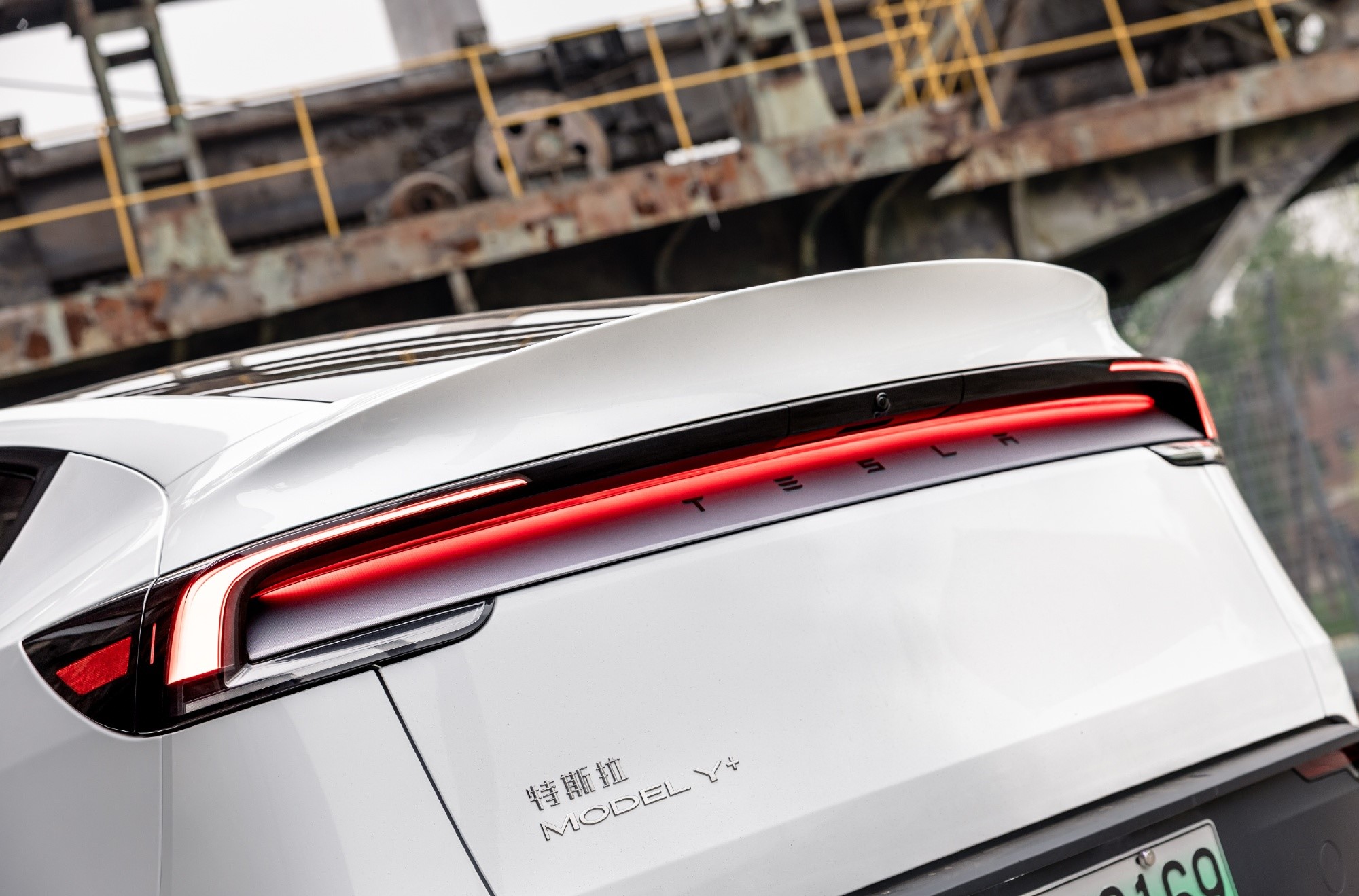
Cantor Fitzgerald is holding firm on its bullish stance for Tesla (NASDAQ: TSLA), reiterating its “Overweight” rating and $355 price target amidst the company’s release of its Q2 2025 vehicle delivery and production report.
Tesla delivered 384,122 vehicles in Q2 2025, falling below last year’s Q2 figure of 443,956 units. Despite softer demand in some countries in Europe and ongoing controversies surrounding CEO Elon Musk, the firm maintained its view that Tesla is a long-term growth story in the EV sector.
Tesla’s Q2 results
Among the 384,122 vehicles that Tesla delivered in the second quarter, 373,728 were Model 3 and Model Y. The remaining 10,394 units were attributed to the Model S, Model X, and Cybertruck. Production was largely flat year-over-year at 410,244 units.
In the energy division, Tesla deployed 9.6 GWh of energy storage in Q2, which was above last year’s 9.4 GWh. Overall, Tesla continues to hold a strong position with $95.7 billion in trailing twelve-month revenue and a 17.7% gross margin, as noted in a report from Investing.com.
Tesla’s stock is still volatile
Tesla’s market cap fell to $941 billion on Monday amid volatility that was likely caused in no small part by CEO Elon Musk’s political posts on X over the weekend. Musk has announced that he is forming the America Party to serve as a third option for voters in the United States, a decision that has earned the ire of U.S. President Donald Trump.
Despite Musk’s controversial nature, some analysts remain bullish on TSLA stock. Apart from Cantor Fitzgerald, Canaccord Genuity also reiterated its “Buy” rating on Tesla shares, with the firm highlighting the company’s positive Q2 vehicle deliveries, which exceeded its expectations by 24,000 units. Cannacord also noted that Tesla remains strong in several markets despite its year-over-year decline in deliveries.
News
Tesla Sweden responds to car magazine’s claims that Model 3 has deficient brakes
The company stated that it would be examining the two Model 3s that were used in the magazine’s test.
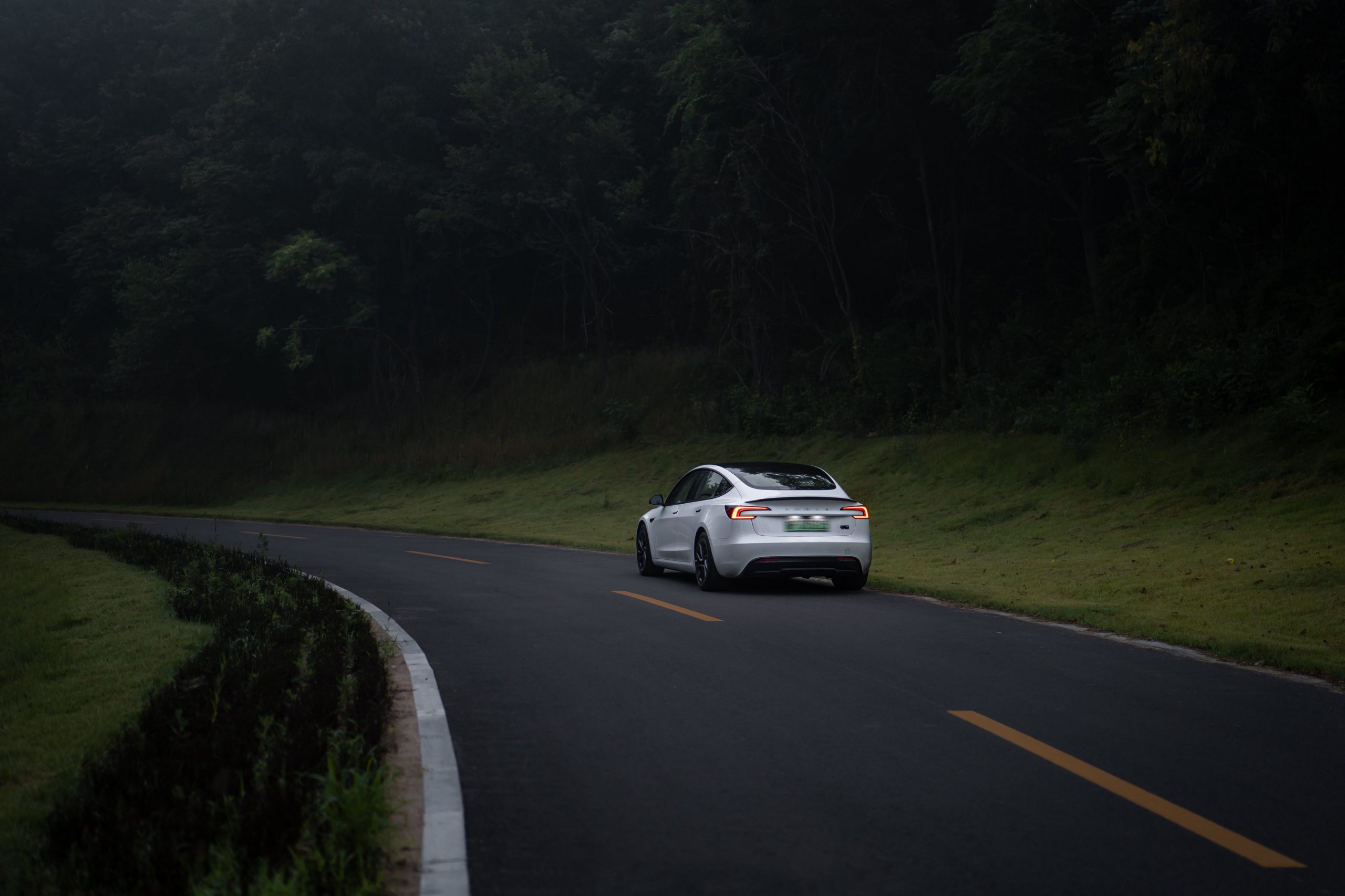
Tesla Sweden has responded to a car magazine’s claims that the new Model 3 sedan has “deficient” brakes. The all-electric sedan was subjected to the publication’s tests, and its braking distance was reportedly found to be lacking.
The car magazine’s tests
As noted in a report from Swedish car magazine Teknikens Värld, the new Model 3 Long Range’s braking distance proved subpar when it was tested, with the vehicle reportedly having a braking distance of a whopping 133.2 feet (40.6 meters). The magazine claimed that it repeated the test with another Model 3, and its results were only 5 feet (1.5 meters) better.
The magazine noted that this was unacceptable since an acceptable braking distance is 124 feet (28 meters), which also happens to be the Model 3’s braking distance when it was tested by Edmunds in the United States. The publication also stated that the Volkswagen ID.7 Tourer, which is equipped with drum brakes at the rear, had a braking distance that’s 16 feet (5 meters) shorter in its tests.
Tesla Sweden’s response
Tesla Sweden responded to the car magazine’s claims, stating that the all-electric sedan’s alleged braking performance was not consistent with the company’s data, nor does it align with the Model 3’s safety ratings. The company also noted that it would be examining the two Model 3s that were used in the magazine’s test.
“In the latest braking tests with Model 3, which were conducted by Teknikens Värld 2021, a braking distance of 36.5 meters was measured for Model 3 RWD and 36.7 meters for Model 3 Long Range AWD, so these results are not recognized or consistent with our internal tests.
“We are examining the two specimens to find out why the braking distances differ. Safety is number one at Tesla. Model 3 comes with all safety features as standard. Independent crash safety organization Euro NCAP recently announced new crash results for cars tested in May 2025. Euro NCAP gives the upgraded Model 3 a 5 out of 5-star safety rating and an overall score of 90%, making Model 3 one of the safest vehicles tested under the latest and most stringent testing protocol ever,” Tesla Sweden stated.
Teknikens Värld digs its heels
While Tesla Sweden has responded to its allegations, the car magazine noted that it will nonetheless stand firm on its claim that the new Model 3 has deficient brakes.
“The fact that the Model 3 previously passed the brake test is not relevant because today’s generation of the Model 3 is to be considered a new generation, as Tesla themselves often point out. Nor is the result in Euro NCAP relevant because they are different tests. We can therefore conclude that Tesla has deficient brakes on the new Model 3. It is good for everyone to know,” the car magazine wrote.
-

 Elon Musk1 week ago
Elon Musk1 week agoTesla investors will be shocked by Jim Cramer’s latest assessment
-

 News2 weeks ago
News2 weeks agoTesla Robotaxi’s biggest challenge seems to be this one thing
-

 News2 weeks ago
News2 weeks agoWatch the first true Tesla Robotaxi intervention by safety monitor
-

 Elon Musk1 week ago
Elon Musk1 week agoA Tesla just delivered itself to a customer autonomously, Elon Musk confirms
-

 News2 weeks ago
News2 weeks agoTesla Robotaxi rollout proves that Elon Musk still delivers, even if it’s late
-

 Elon Musk2 weeks ago
Elon Musk2 weeks agoxAI welcomes Memphis pollution results, environmental groups push back
-
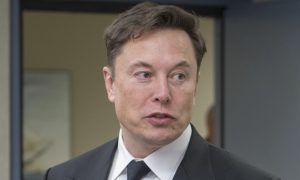
 Elon Musk2 weeks ago
Elon Musk2 weeks agoElon Musk commends Tesla team on successful Robotaxi launch
-

 Elon Musk2 weeks ago
Elon Musk2 weeks agoElon Musk confirms Tesla Optimus V3 already uses Grok voice AI


